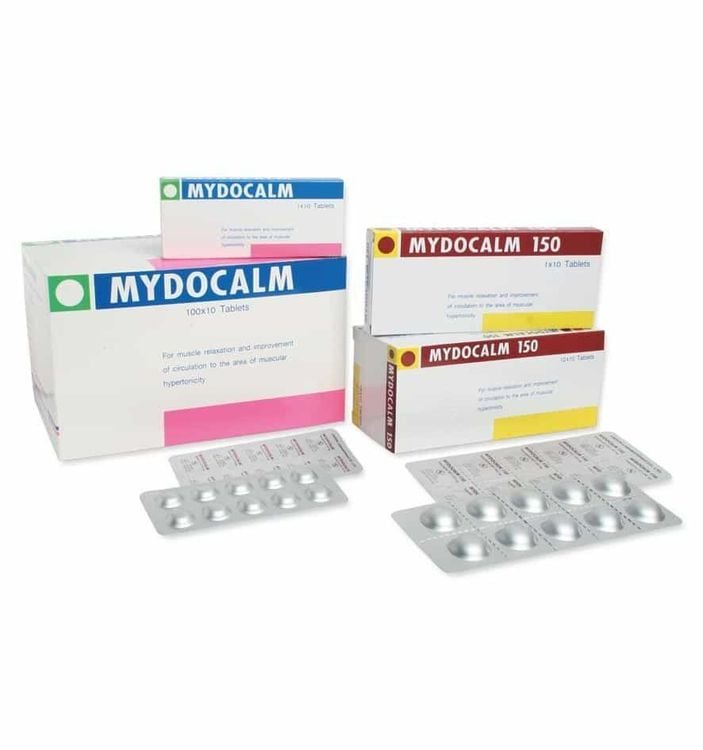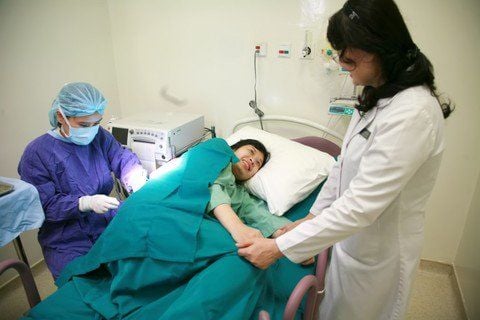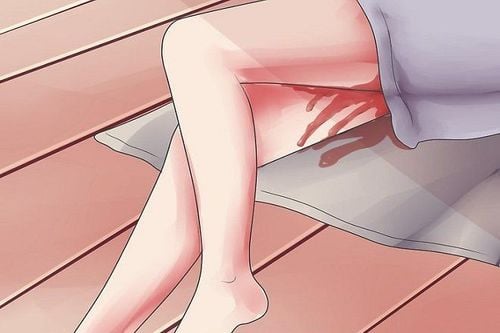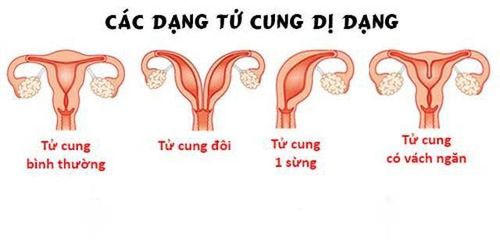This is an automatically translated article.
The article was professionally consulted by Specialist Doctor II Lai Thi Nguyet Hang - Department of Obstetrics and Gynecology - Vinmec Ha Long International Hospital.Uterine inversion (also called inversion) is a rare emergency of vaginal delivery in which part or all of the uterus turns inside out, beyond the cervix or vulva. This abnormal uterine pathology mainly occurs when the force pulling the umbilical cord to remove the placenta is too strong.
1. What is uterine inversion?
Uterine inversion is a serious but rare complication of natural childbirth, in which the uterus turns out completely after the baby is born. When uterine inversion occurs, the top of the uterus (bottom) passes over the cervix or even lies completely outside the vagina. The incidence is about 1 in 3,000 births.Normally, after vaginal delivery, natural contractions cause the placenta to separate from the uterine wall. This usually happens within 5 - 10 minutes after you give birth, but it can sometimes take longer. As long as you're not bleeding, your doctor or midwife can wait a while for the placenta to separate on its own. When the midwife checks that the placenta has been removed, you may be asked to push gently, while the doctor will gently pull on the umbilical cord to help push the placenta out of the uterus and through the vagina to exit. Sometimes, the placenta doesn't separate normally, and this pulling effort will cause the uterus to invert. There are also cases where uterine inversion occurs on its own, or due to too much pulling pressure during placental delivery, uterine laxity, placenta accreta...
If the placenta does not fall off on its own, the doctor will perform the procedure. manual placental abruption. Specifically, put one hand through the vagina to enter the uterus, then squeeze into the placenta to peel the placenta from the uterine wall.
Uterine inversion can lead to serious problems, including massive bleeding and life-threatening shock. This condition will be especially serious if not detected early and treated promptly.
2. Causes of Uterine Inversion

Labor lasting more than 24 hours Short umbilical cord Premature birth Using muscle relaxants during labor Abnormal or weak uterus Previous inversion of the uterus Placenta comb teeth, in which the placenta attaches too deeply to the uterine wall The placenta attaches to the top of the uterus. Also, pulling the umbilical cord too hard to remove the placenta can also cause the uterus to reverse. The umbilical cord should never be pulled forcefully, and the placenta should also be carefully and gently removed. In the event that the placenta has not been removed within 30 minutes of delivery, forceful manual handling should be avoided. Otherwise, the pregnant woman may experience bleeding and infection.
3. Diagnosis and treatment of uterine inversion
3.1. Diagnosis This abnormal uterine pathology is easily diagnosed through clinical observation. Symptoms usually include:The uterus is protruding from the vagina The uterus is not in the proper position A lot of blood loss or a rapid drop in blood pressure The mother may also experience some symptoms of obstetric shock such as:
Dizziness face, dizziness Chills Fatigue Loss of breath.

You will have an IV line set up immediately if it is not already available. Medications to control pain and relax the uterus will be given, allowing the doctor to reposition the uterus. Sedation, general anesthetic, Uterine spasmolytics may be used in these cases
If the placenta is still attached to the uterus, the uterus should be repositioned before the placenta is removed. In cases where attempts to manually push back the uterus are unsuccessful, laparotomy is required to return the uterus to its original position.
Once your uterus has been repositioned, the nurse will stop the infusion of the drugs that dilate the uterus. Instead, you'll receive continuous IV oxytocin infusions to stabilize the uterus, help keep it in place, and control bleeding. Once the uterus is strong enough, the healthcare provider will place one hand inside your vagina and the other on your abdomen to apply pressure to compress the uterus and slow bleeding.
In addition, there is a newer technique for correcting uterine inversion using a balloon and water pressure device. A balloon is placed inside the uterine cavity and filled with a saline solution to push the uterus back into its original position. This simple procedure was successful in repositioning the uterus, while stopping blood loss and effectively reversing the uterus from reoccurrence.
3.3. Monitoring The medical team will continue to closely monitor the pregnant woman, including checking the uterus to make sure it is still in the correct position, watching for vital signs and vaginal bleeding. You will receive blood transfusions as needed and will likely take antibiotics to prevent infection. You will most likely feel weak and lightheaded. During this time, do not try to get out of bed.
Once you have been shipped home, you need to take better care of yourself. Get plenty of rest, eat nutritious meals, drink plenty of fluids, and follow all of your doctor's instructions, such as asking for an iron supplement.
4. Note in the next pregnancy

Although inversion of the uterus does not occur frequently, it does lead to a high risk of death from severe bleeding and shock. However, uterine abnormalities can be successfully treated with early diagnosis, prompt management, and appropriate fluid and blood transfusion. After being overcome, the mother can ensure her health and not have long-term uterine damage.
Obstetric complications, uterine abnormalities can be diagnosed before birth. Therefore, during pregnancy, especially near the due date of delivery, pregnant women need to have regular antenatal check-ups according to the doctor's appointment, and at the same time choose reputable addresses and hospitals with obstetrics and gynecology specialties to perform childbirth. is a pregnant woman with a difficult and abnormal prognosis during pregnancy.
After 9 months and 10 days of heavy weight, pregnant women go into labor and face a level of labor pain comparable to 20 broken ribs at the same time. In order for the birth to go smoothly and safely, pregnant women need to understand:
How the labor process takes place, how long does it usually take to have a normal delivery or caesarean section, to protect the best health for the unborn baby. Methods to relieve pain during childbirth, limit pain and relieve psychological pressure during labor. The way to push and breathe during childbirth is usually the right way so that the labor takes place quickly, the pregnant woman does not lose strength during childbirth. How to control postpartum uterine contractions in the shortest time. How to take care of the perineal suture does not cause infection and dangerous complications. Early postpartum re-examination to detect dangerous abnormalities such as residual placenta, missing gauze. Take care of newborn until full month healthy. To ease the pain of childbirth, Vinmec offers a full Maternity program with a complete "painless delivery" service during and after birth using non-morphine epidural and sedation techniques. ashamed. During the birth process, the mother will be instructed by doctors and midwives how to push and breathe properly, the baby will be born in just 10-15 minutes. After birth, the baby will be cared for in a sterile room before being returned to the mother.
Pregnant women will rest in a high-class hospital room, designed according to international hotel standards, 1 mother 1 room with full facilities and modern equipment. Mothers will be consulted by nutritionists on how to feed the baby before being discharged from the hospital. Postpartum follow-up with both mother and baby with leading Obstetricians and Pediatricians.
Please dial HOTLINE for more information or register for an appointment HERE. Download MyVinmec app to make appointments faster and to manage your bookings easily.
References: babycenter.com, healthline.com, .msdmanuals.com














